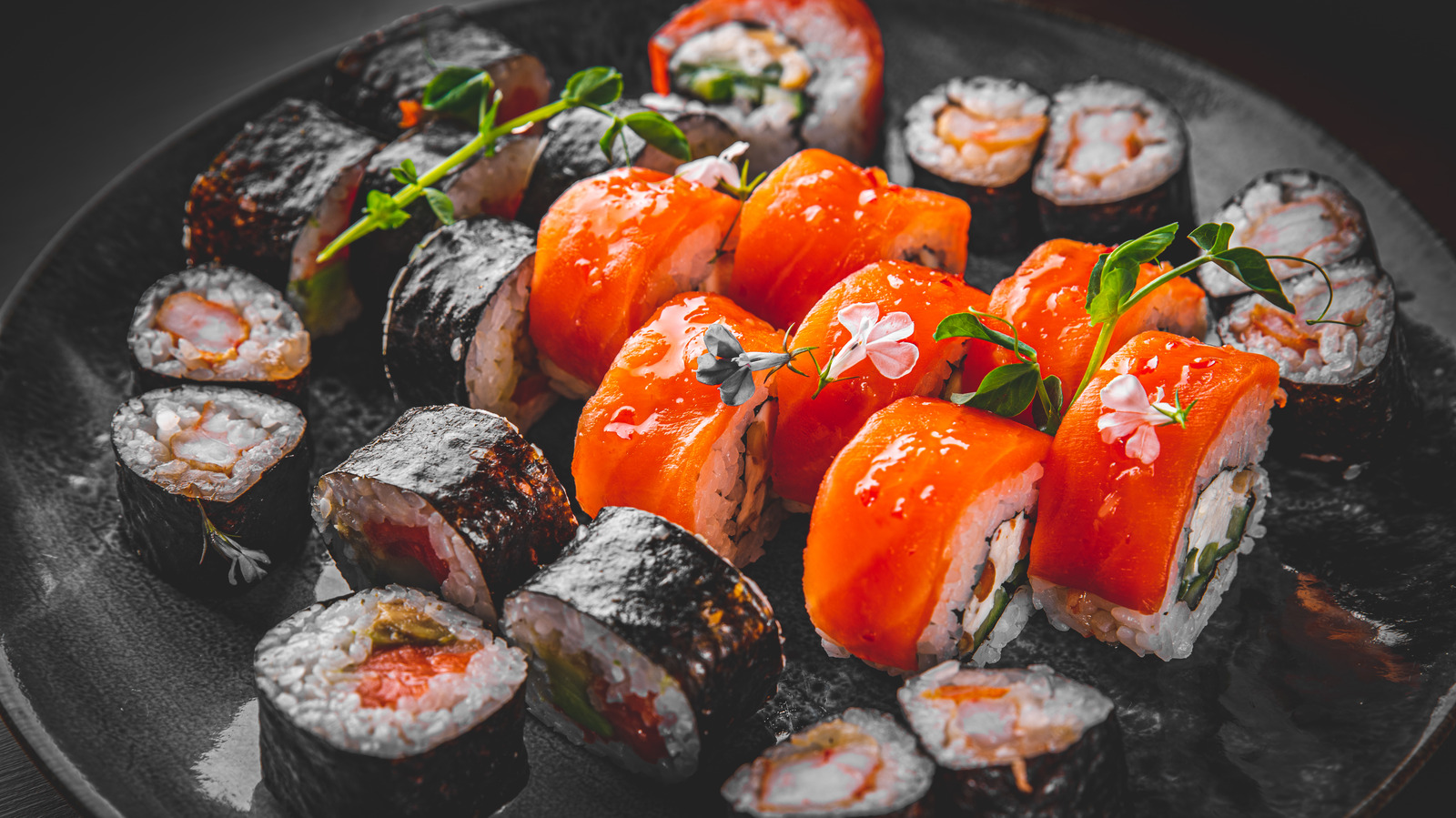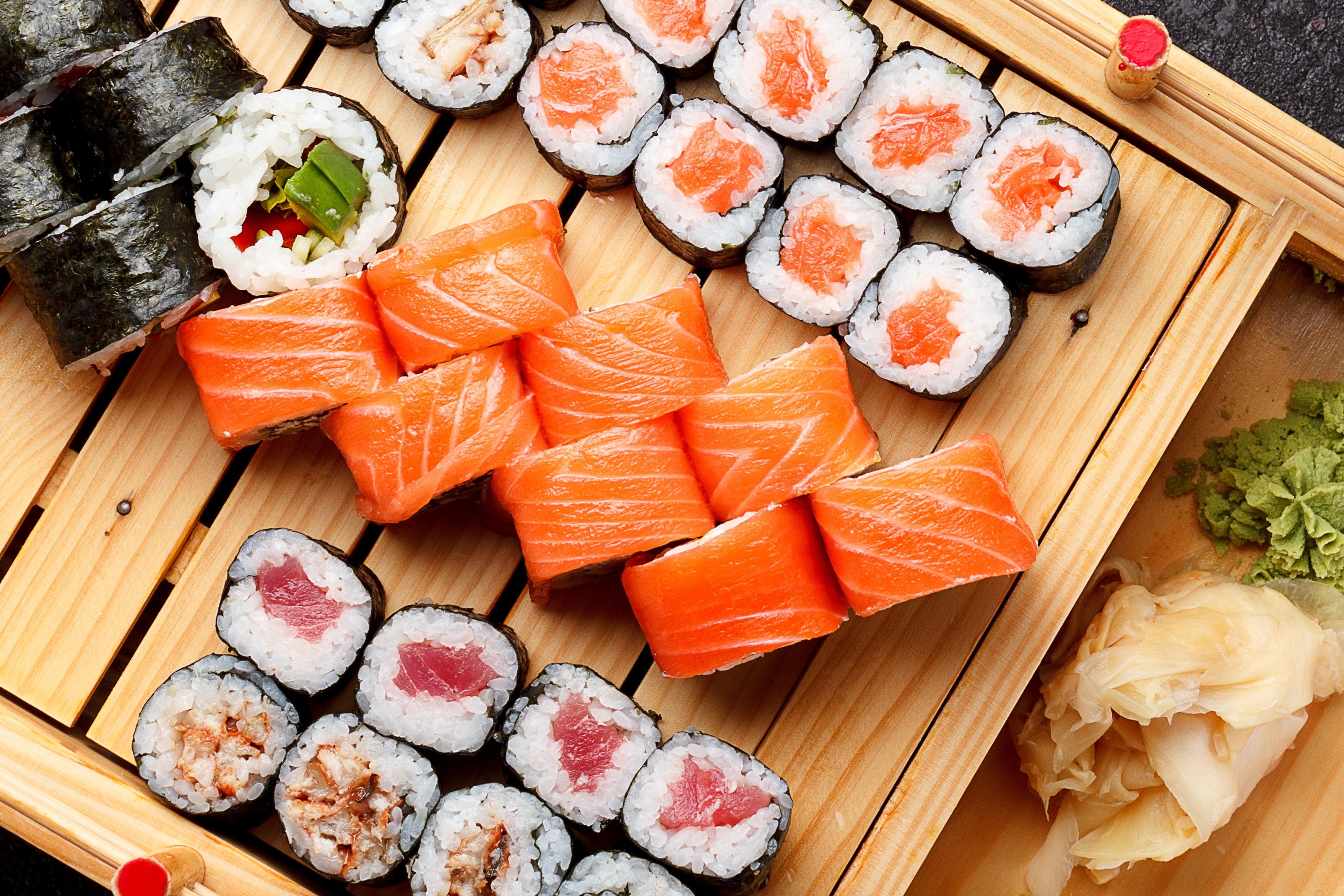Table of Contents
- What Makes Sushi Okoku Truly Stand Out?
- The Artful Creation of Sushi Okoku Dishes
- How Does Sushi Okoku Prepare Its Signature Rice?
- The Detailed Steps for Sushi Okoku Rice
- Understanding Your Sushi Okoku Menu: What's the Real Scoop?
- Decoding Sashimi and Nigiri at Sushi Okoku
- What's the Story Behind Eel Sauce at Sushi Okoku?
- The Sweetness of Unagi Sauce for Sushi Okoku
Stepping into a place like Sushi Okoku, you get a sense of something special, a spot where the making of food is truly a form of careful handiwork. It's a place that seems to hold a real appreciation for putting together dishes that simply feel right, a perfect mix of how things taste and how they feel when you take a bite. You might find yourself just a little bit amazed by the attention given to each piece, from the well-known forms of nigiri and sashimi to those inventive rolls and even the special little items served before the main meal. This commitment to quality, you know, really makes a difference.
Located at 10380 Magnolia Avenue in Riverside, California, 92505, this spot is more than just a place to eat; it's somewhere you can experience a dedication to fresh ingredients and skilled cooking. Every single item that comes out of their kitchen shows a deep respect for the ways of Japanese cooking, while also bringing in new ideas. It's actually quite something to see how they manage to keep things both traditional and fresh, all at once.
When you think about it, a place that takes its food so seriously, especially something as delicate as sushi, really stands out. They put in the effort to get every element just so, which, honestly, makes for a truly memorable eating experience. It’s a bit like finding a hidden gem, where the food speaks for itself, inviting you to come back for more of that carefully put together taste and texture.
What Makes Sushi Okoku Truly Stand Out?
When you consider what makes a place like Sushi Okoku different from others, it really comes down to the people doing the cooking. Their experienced sushi makers spend time putting together each dish, making sure that every single mouthful is a delightful blend of taste and feel. This isn't just about putting ingredients together; it's about making sure that the different tastes and sensations work well with each other, so you get something truly pleasing. It's almost as if they're painting with food, you know, carefully choosing each brushstroke.
The Artful Creation of Sushi Okoku Dishes
At Sushi Okoku, the range of food options is pretty wide, offering something for just about everyone. You can find the popular, well-known pieces like nigiri, which is fish on top of rice, and sashimi, which is just slices of fish, often served without rice. But then, there are also those imaginative rolls that bring together different tastes in surprising ways. And, of course, they have a selection of distinct smaller dishes that are just right for starting your meal. They really do try to give you a full picture of what sushi can be, presenting both the familiar and the new, which is quite nice.
The people who prepare the food here, they really pay attention to the little things. They understand that the way something feels in your mouth is just as important as how it tastes. So, when you try a piece of their sushi, you might notice the slight chewiness of the rice, the tender give of the fish, or the crisp snap of a fresh vegetable. This focus on the overall experience, you see, is a big part of what makes their food so appealing. It's more than just eating; it's a sensory event, in a way.
How Does Sushi Okoku Prepare Its Signature Rice?
You might wonder how a place like Sushi Okoku gets its rice to taste so good, to have that perfect stickiness and flavor that really makes the sushi. Well, it turns out there's a specific way to do it, and it involves a few important steps. It's not just cooking rice; it's preparing it so it becomes a key part of the whole dish, a foundation for all the other wonderful ingredients. They actually follow a recipe that's pretty well-regarded, which helps ensure consistency and great taste every time.
The Detailed Steps for Sushi Okoku Rice
To get that ideal sushi rice for Sushi Okoku's creations, they often look to methods that have been proven to work, like the one Alton Brown shared on Food Network's "Good Eats." This particular approach helps turn regular rice into something truly delicious. The secret, in part, involves a special mix of rice vinegar, sugar, and salt. These ingredients are what give the rice its distinctive tang and a touch of sweetness, lifting it from just plain grains to something with a bit more character. It's a bit like adding a secret seasoning that changes everything, you know.
Before any of that seasoning happens, though, the rice needs to be cleaned properly. This is a step that can't be rushed. The rice is rinsed in cold water, and it's stirred quite quickly to help loosen any bits of dust or other unwanted particles. This process is kept up until the water that drains away is completely clear, which, honestly, can take a few rounds. They usually wash the rice at least three times, or even more, until there's no cloudiness left in the water at all. It's a very thorough process, as a matter of fact.
Once the rice is thoroughly washed and clean, it's allowed to sit and drain in a colander for a good amount of time, usually about an hour. This step helps remove any extra water, making sure the rice isn't too wet before it's cooked. Getting the moisture content just right is, you see, quite important for the final texture. This careful preparation is what helps the rice become the perfect base for all the tasty fish and other items that make up a piece of sushi. It really does make a difference in how the sushi holds together and tastes.
Understanding Your Sushi Okoku Menu: What's the Real Scoop?
When you look at a menu at a place like Sushi Okoku, you might see words like sushi, sashimi, and crudo, and it's natural to wonder what makes each one different. They all involve fresh ingredients, often fish, but how they're prepared and presented can vary quite a bit. Knowing these distinctions can help you pick out exactly what you're in the mood for and appreciate the skill behind each type of dish. It's almost like learning a new language, just for food, you know.
Decoding Sashimi and Nigiri at Sushi Okoku
Sashimi and nigiri, for example, both include raw fish and often show up together on sushi menus, but they are actually distinct kinds of food in Japanese cooking. Sashimi is simply thinly sliced raw fish or seafood, served on its own, usually with a bit of garnish like shredded daikon radish. It's all about the pure taste and texture of the fish itself. Nigiri, on the other hand, takes that same raw fish or seafood and places it on top of a small, hand-pressed mound of seasoned rice. So, the key difference, you see, is the presence of the rice underneath.
While both are very popular choices at places like Sushi Okoku, they offer slightly different eating experiences. With sashimi, you get the unadulterated flavor of the fish, allowing its natural qualities to shine through without any other strong tastes. Nigiri, however, provides a more complete mouthful, where the subtle sweetness and tang of the rice complement the fish. It's a classic pairing, really. Both are excellent ways to enjoy fresh seafood, but they cater to slightly different preferences in how you want your fish presented. It's a bit like choosing between a plain piece of fruit or a fruit tart, you know.
What's the Story Behind Eel Sauce at Sushi Okoku?
If you've ever had grilled eel at a Japanese restaurant, or perhaps a roll that features it, you've probably tasted eel sauce, also known as unagi sauce. This particular sauce is a very traditional part of Japanese cooking, used specifically when preparing grilled eel. It has a distinctive sweet and savory flavor that really brings out the best in the eel. It's quite a popular addition to many dishes, actually, adding a rich, glossy finish. You might even find yourself wanting to put it on other things, it's that good.
The Sweetness of Unagi Sauce for Sushi Okoku
At Sushi Okoku, just like in many good Japanese kitchens, the unagi sauce is a carefully made component. It's typically a reduction of soy sauce, mirin (a sweet rice wine), sake, and sugar, cooked down until it becomes thick and syrupy. This cooking process concentrates the flavors, giving it that deep, appealing taste. The sauce is then brushed onto the grilled eel, giving it a beautiful shine and a wonderful depth of flavor. It's more or less a signature taste that many people associate with this particular dish.
For those who really enjoy the taste, it's even possible to make your own at home. There are recipes that guide you through the process, allowing you to create this sweet and savory condiment right in your own kitchen. Having a homemade version means you can always have that special flavor ready to go, whether you're preparing eel or simply want to add a touch of Japanese sweetness to other foods. It's a pretty versatile item, in a way, once you get to know it.
Is Imitation Crab Used at Sushi Okoku?
When you see "crab" on a sushi


/GettyImages-Ridofranz-1053855542-60b89644efd2470fbfb6475b175064df.jpg)
